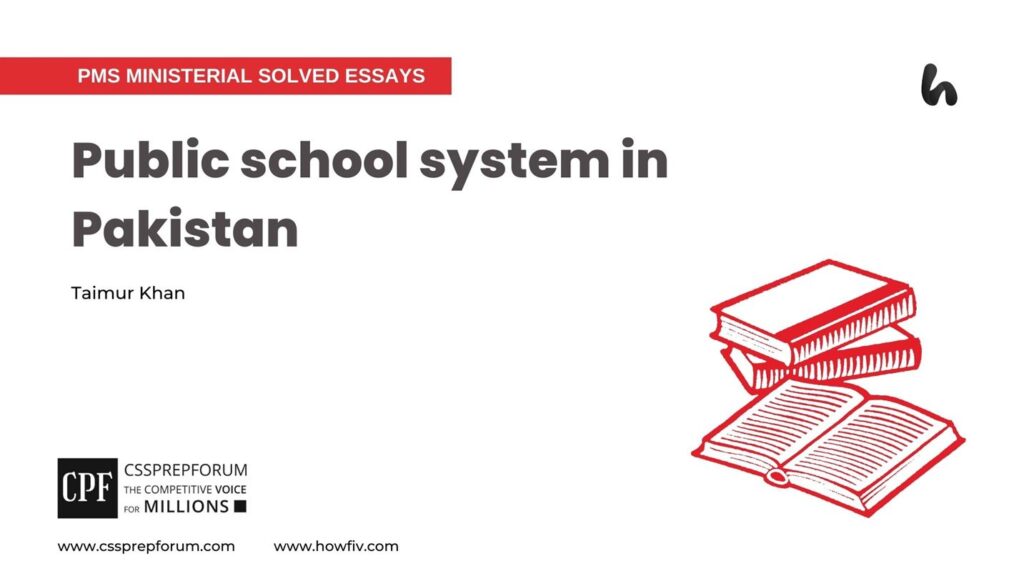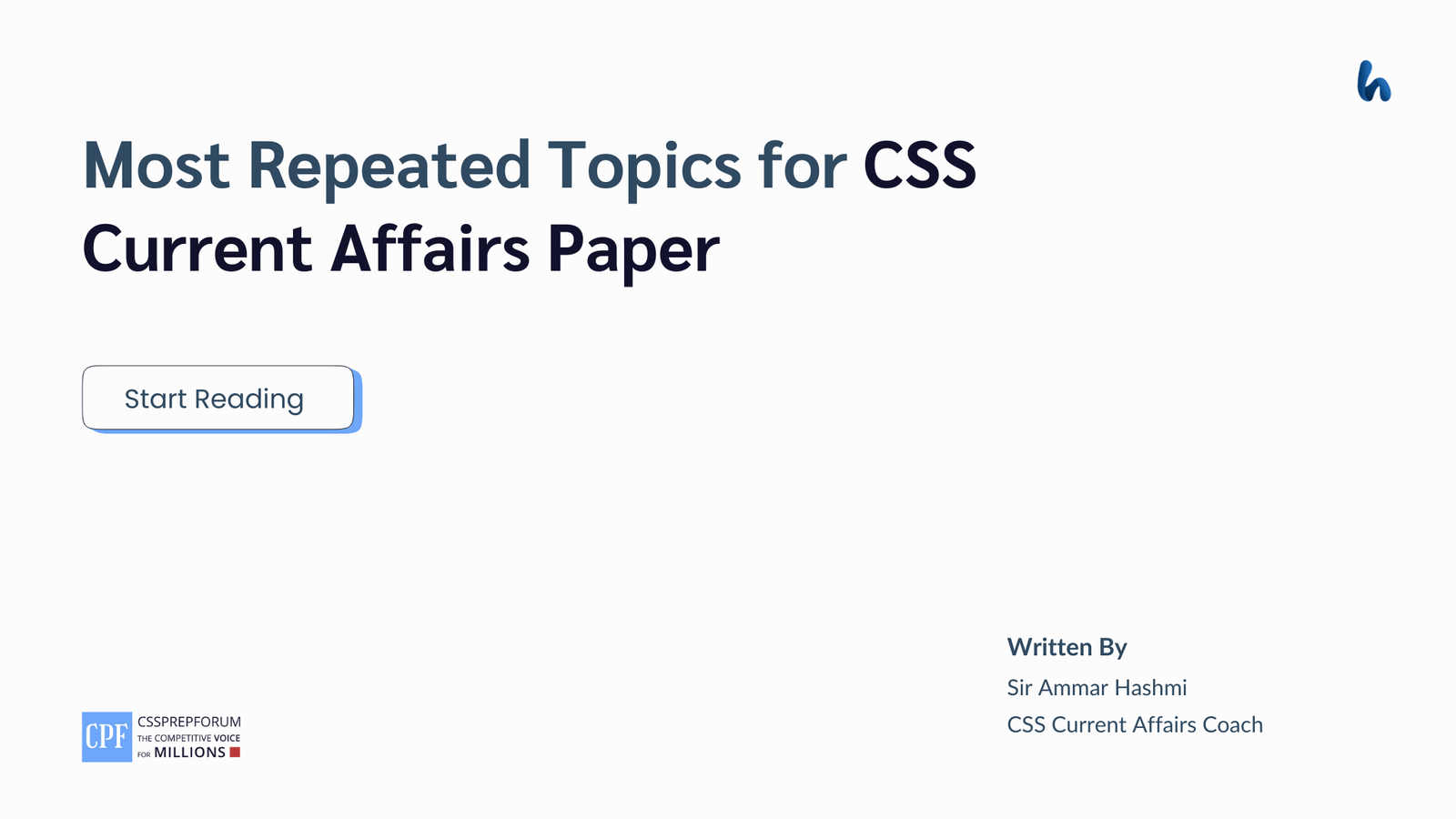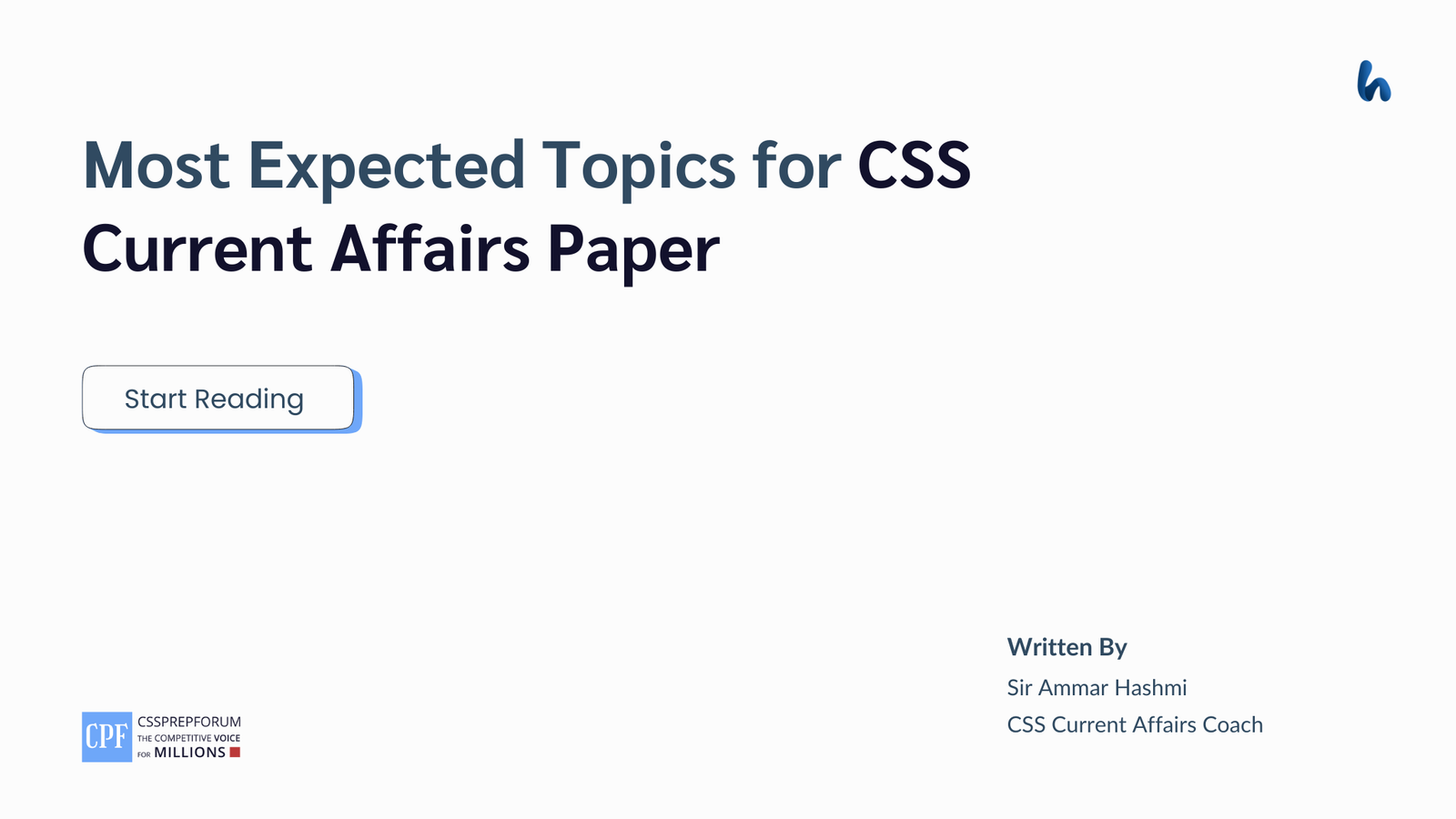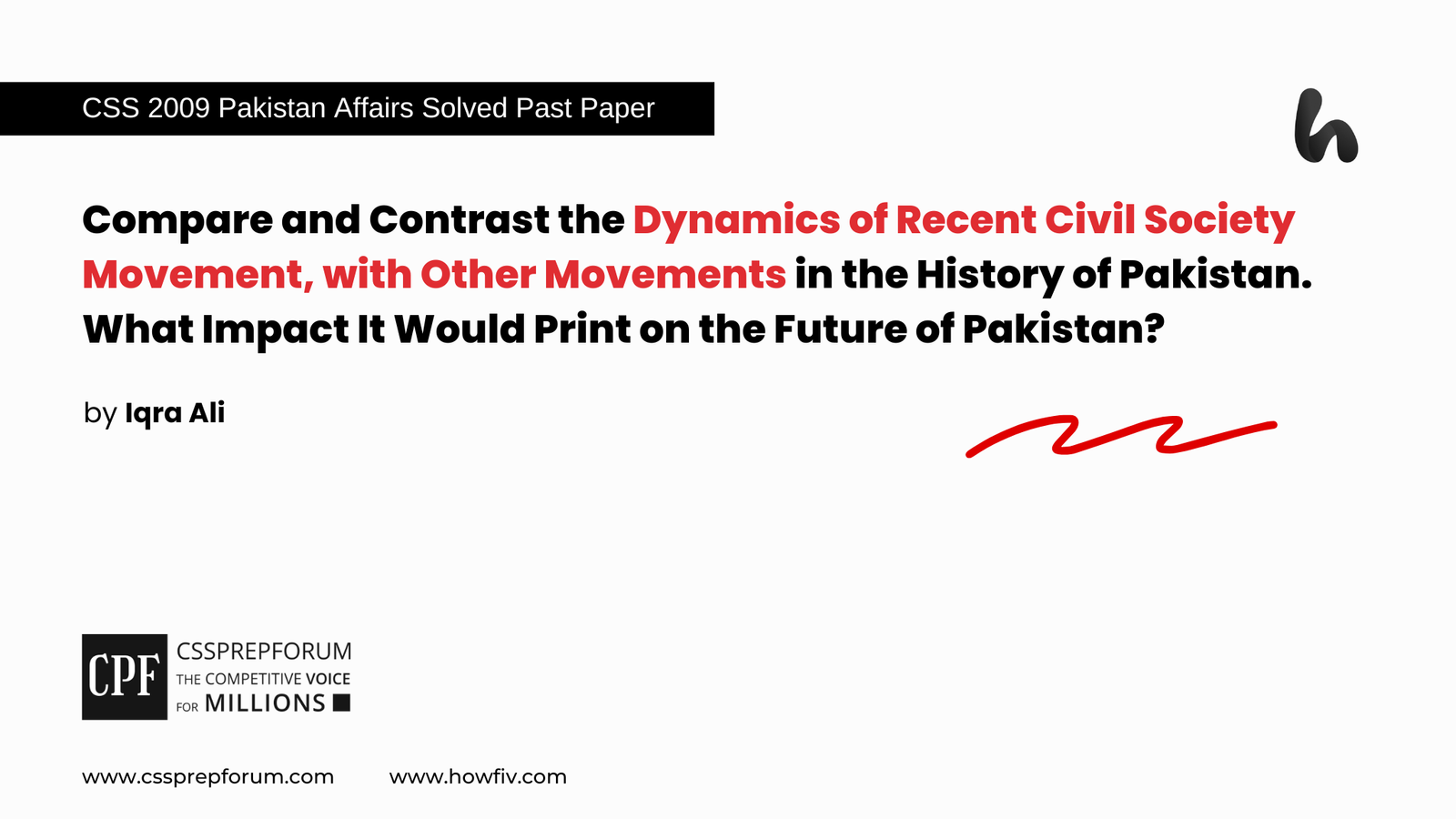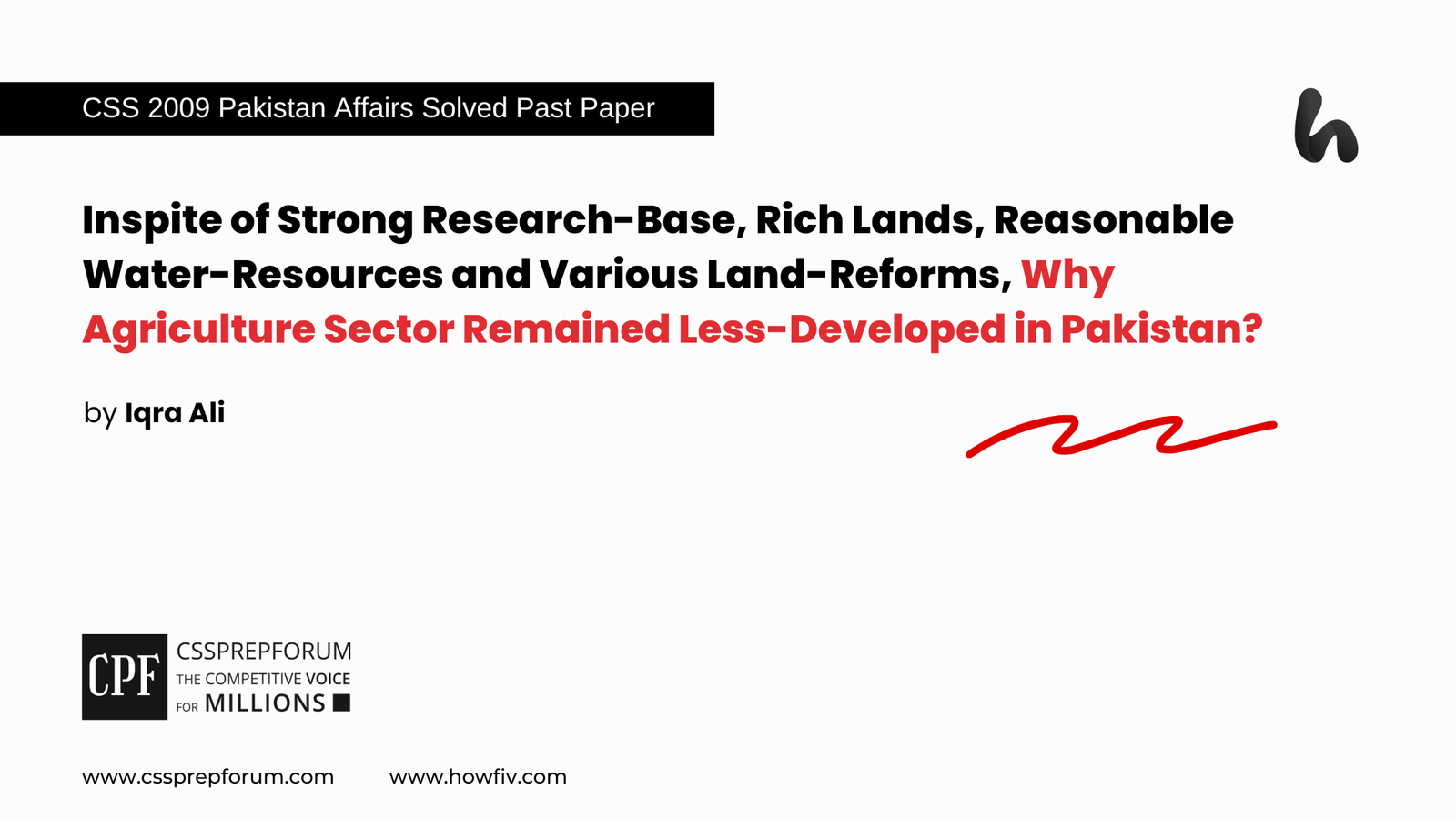PMS Ministerial Solved Essays | Public school system in Pakistan
This PMS Ministerial essay is attempted by Taimur Khan on the given pattern, which Sir Syed Kazim Ali teaches to his students, who have consistently been qualifying their CSS, and PMS essays. Sir Syed Kazim Ali has been Pakistan’s top English writing and CSS, PMS essay and precis coach with the highest success rate of his students. The essay is uploaded to help other competitive aspirants learn and practice essay writing techniques and patterns.
How To Attempt 25-Marks PMS Ministerial Essay?
Unlike CSS or PMS essays, the essays asked in the PMS ministerial or any descriptive examinations in Pakistan are of 25-marks. All you need to qualify for the PMS ministerial essay paper is to understand the topic, create an outline displaying the proper plan of your essay and write an introduction precisely carrying the thesis statement. An introductory paragraph of such essays is a 150- to 200-word paragraph that gives your examiner a quick overview of your essay and its organization. It should express your thesis (or central idea) and your key points. Remember, the introductory paragraph is a concise summary of the essay, upon which your success standstill. However, the body of your essay will develop and explain these ideas much more thoroughly. As you will see in the solved essay below, the proportion of your introduction that you dedicate to each kind of information and the sequence of that information might vary, depending on the nature and genre of the essay you select. Nevertheless, in some cases, some of this information is implied rather than stated explicitly. For better preparation, revise my lectures on how to attempt a 20 or 25 marks essay, write its outline and introduction and prove your arguments with relevant evidence in the essay’s body paragraphs.

1- Introduction
- The public school system is fraught with inaccessibility to millions of children, lack of quality education, and the problem of systemic governance crisis in the education sector of Pakistan, which are remediable through improving educational governance and instituting charter schools.
2- Current situation of the public school system in Pakistan
- Couched in a labyrinth of federal, provincial, and district administrative and regulatory mechanisms, the public education system in the country serves sixty-nine per cent of children (Economic Survey 2022-2021)
3- Issues and challenges confronting the public education system in the country
- Growing inaccessibility issue
- Case in point: The literacy rate, according to UNICEF, is dismally low, standing at fifty-eight per cent, with one of the highest out-of-school children touching twenty-two million
- Lacking quality of learning
- Case in point: According to a report by Alif Ailaan, the majority of the student, about ninety per cent studying in public schools at the primary level cannot read or write a simple text
- Missing effective educational governance framework
- Case in point: Due to weak governance, as many as sixty thousand ghost teachers and seven thousand ghost schools encumber the public school system in Pakistan, as per the estimates of the Asian Human Rights Commission
4- Strategies to enhance the capacity of the public education system in Pakistan
- To improve educational governance
- Case in point: According to the United Nations Education Scientific and Cultural Organization (UNESCO), good governance is critical for improving public school system in terms of both improving literacy rates and ensuring quality of education.
- To institute charter schools
- Case in point: In Arizona, according to the City Journal, the charter schools numbering fifteen thousand have performed well on a par with other educational institutions in terms of management, and academic performance.
5- Conclusion

The public education system is not only a source of national integration and socio-economic uplift of the dispossessed in a country but also a need of the hour amidst burgeoning population, industrialization, and globalization. Being conscious of these opportunities and challenges, the European countries, along with some countries in Asia, such as Japan and Singapore, have instituted an effective public school system in the nineteenth and twentieth centuries, leading them to the pinnacle of socio-economic and political development. On the other hand, the developing countries that have ignored an extensive and effective public school system have lagged behind the European countries, leading the former to poverty, illiteracy, insularity, intellectual lethargy, extremism, and social divisions based on gender, class, and ethnicity. Unfortunately, Pakistan is among those developing nations that have ignored an efficacious public education system. The public education system in Pakistan is marred with systemic issues. The literacy level in the country is dismally low and is fraught with poor educational outcomes. Moreover, the absence of effective educational governance impedes the working of the public school system in Pakistan. Nonetheless, to improve the efficiency and effectiveness of the public education system, Pakistan needs to lay down a robust educational governance framework and initiate charter schools that would cater to the needs of the ballooning population.

Given its immense importance, Pakistan had, in the initial years after its inception, formed a comprehensive yet complex public school system in Pakistan, which is the mainstay of the country’s goal of achieving universal literacy. In general, the education system in the country has three parallel schooling: private schools, public schools, and Deeni Madaras. Among these, the public school system serves sixty-eight per cent of the students between the ages of four to sixteen (Economic Survey of Pakistan 2021-2022). Furthermore, the educational institutions within the country are divided into the following categories: pre-primary school, primary school, middle school, high school, higher secondary, inter-colleges, degree colleges, universities, and technical & vocational institutions. The education system is designed for 12 years of schooling, with five years in primary school, three in middle school, and four in high school. Moreover, every child in Pakistan is entitled to attain free and compulsory education from the age of five to sixteen, as per Article 25-A of the constitution. In addition, the administration and management of the public school system is primarily in the hand of provincial governments after the Eighteenth Amendment, with only the coordination and facilitation of the federal government through the Ministry of Federal Education and Professional Training in order to maintain coherence in education policies. In brief, the public education system in Pakistan is couched in a complex web of Pakistan’s administrative and policy-related setup.
Although Pakistan has one of the oldest and broad-based public school systems owing to rampant poverty and inequality in the country, rapid population increase, and economic and political crises have overburdened the system, impacting both the literacy level and quality of learning in public schooling.
Pakistan has failed to educate millions of aspiring and deserving masses. The literacy level, in turn, is dismally low in the country. For instance, the overall literacy level in Pakistan, according to UNICEF, stands at fifty-eight per cent, with one of the second largest of out-of-school children (OOSC), which is estimated at 22.8 million. Similarly, the gross enrollment ratio in secondary level of education in Pakistan stands at forty-three per cent, which is the lowest in South Asia (UNESCO). Moreover, the disparities based on geography, gender, and socio-economic status are striking. For example, as many as fifty-two per cent of the poorest in Sindh and seventy-eight per cent of girls are out of school in Baluchistan. Corporal punishment, low transportation in public schools, lack of girls’ schools, poverty and excludability, safety concerns, especially for girls, non-availability of basic amenities such as toilets, electricity, and sociocultural factors are but a few challenges that overwhelm the fragile and overburdened public school system in the country. In brief, due to resource constraints, and socio-economic factors, the public education system is fraught with many problems making it impossible to cater to the needs of the burgeoning population.
Besides inaccessibility in serving the poor and the disposed of, public education in Pakistan cannot compete with its private counterpart in terms of quality learning. Quality education, according to the “Education for All (EFA) Global Monitoring Report 2005 – The Quality Imperative (EFA: GMR)”, refers to a learner’s cognitive development and values and attitudes necessary for responsible citizenship. Cognizant of the growing issue of quality education in the country, Pakistan had, for the first time, inculcated a standard-based education system in 2017. Recently, the federal government, with the liaison of provincial governments, has set ambitious goals in its policy document “Minimum National Education Standards”. The document outlines certain elements of quality education, such as motivated learning, a healthy and safe school environment, a student-centred curriculum, quality teaching and learning outcomes like knowledge, skill development, and responsible citizenry. However, despite having set out these standards for education, the public education sector in Pakistan is still marred with various challenges, such as the lack of professional teachers, absence of career counselling, outdated curriculum, absenteeism, dropouts, and the lack of science labs etc. These challenges have manifested in lower education outcomes in Pakistan. For instance, according to Alif Ailaan, a non for profit organization, as many as ninety per cent of the learners at the primary level in public sector education cannot read or write a simple paragraph. In a nutshell, the absence of quality school education reflected in lower educational outcomes is, unfortunately, a hallmark of the public school system in Pakistan.
The question is why Pakistan’s public school system lags behind in terms of quantity—low literacy—and quality, i.e., lower educational outcome; in fact, it is the governance crisis in public sector education that impedes the country’s goal to attain universal literacy and inhibits quality education. Rampant corruption, political meddling in administrative affairs of the education sector, lack of planning, and the absence of accountability in the sector are impeding the public school system in Pakistan. For instance, according to the Asian Human Rights Commission, there exist seven thousand ghost schools and more than sixty thousand ghost teachers in Pakistan. Furthermore, a UNESCO study in Pakistan identifies fertile grounds for corruption in the education sector in terms of the distribution of free books to children, recruitment, promotion of education sector employees, including teachers, and supply of equipment.
Enhancing the capacity of the public school system through improving educational governance is key to improving public schooling in Pakistan. Governance, according to UNESCO, plays a crucial and game-changing role in improving the quality of education. Similarly, according to the Education for All (EFA) Global Monitoring Report, governance in education relates not only to the administration and management but also to the formulation of policies and monitoring of plans. Therefore, Pakistan needs to take the following measures to enhance the governance framework in the education sector. First, the education departments must enhance the monitoring mechanism by using technology. For instance, the education department should introduce biometrics to monitor teachers’ absenteeism. Second, strict action should be taken against ghost teachers and the politically-backed administrative staff involved in corruption and nepotism, especially in relation to ghost elements in the education sector. Third, since good governance demands transparency, regular third part audits must be initiated frequently so as to ascertain loopholes in the public school system in the country. In short, bringing accountability and transparency and employing technology can help improve educational governance in the country.
Besides, to improve public sector schooling, some novel ideas should be explored; one of these is charter schools. Being operational in the United States, charter schools are government-funded programs operated by independent operators under strict regulations and monitoring of state institutions. The purpose of charter schools is to improve learning for disadvantaged students. For example, charter schools in Arizona have excelled in academic excellence in terms of learning outcomes, student-teacher liaison, flexible recruitment, and high motivation of both teachers and students (City Journal). The idea can be replicated due to the following reasons. First, charter schools would ensure flexibility in hiring and firing teachers, thereby ensuring accountability. Third, since the public sector in Pakistan is marred with administrative inefficiency, charter schools would lessen the burden on the government. In short, charter schools in Pakistan can help reduce the burden on the unaccountable, lethargic, and badly-governed public school system in Pakistan.
To conclude, Pakistan has had a comprehensive and one of the oldest public school systems aided by well-thought-out education policies. Nonetheless, the lack of good governance in the public school system has ruined the capacity of the system. As a result, public education has not only left millions to attain literacy but also deprived millions of students studying in public school systems of quality education. In order to improve the systemic capacity of the public school system, it is imperative to enhance education governance and adopt some novel ideas, such as charter schools.
PMS Ministerial Solved Essays
Are you searching for PMS Ministerial solved essays from 2010 to till date? Click on any of the topics to start reading the solved essays. All essays have been attempted by Sir Syed Kazim Ali’s students who have either qualified for the CSS or PMS examination or scored the highest marks in the essay papers.
| 1- | Good Governance (2010) |
| 2- | Islam and Brotherhood of Mankind (2010) |
| 3- | Literature is the Essence of Life (2010) |
| 4- | Role of Responsible Media (2010) |
| 5- | A Bird in Hand is Worth Two in the Bush (2016) |
| 6- | He Who Opens a School Door, Closes a Prison (2016) |
| 7- | Local Government is the Base of a Successful Democratic System (2016) |
| 8- | Clean Environment is Good Environment (2016) |
| 9- | Human Resource Development is a Key to Progress and Prosperity (2019) |
| 10- | High Growth Rate in Population is Adversely Affecting our Economic Progress (2019) |
| 11- | Public School System in Pakistan (2019) |
| 12- | Importance of Preventive Healthcare (2019) |
| 13- | National Integration (2021) |
| 14- | Of All Forms of Servitude, the Intellectual is the Most Degrading. Expand This Statement by Showing its Complete Significance and also Attempt to Justify or Disprove it. (2021) |
| 15- | Advantages and Disadvantage of Facebook (2021) |
| 16- | Single National Curriculum: Prospects and Problems (2021) |

CSS Solved Past Papers’ Essays
Looking for the last ten years of CSS and PMS Solved Essays and want to know how Sir Kazim’s students write and score the highest marks in the essays’ papers? Then, click on the CSS Solved Essays to start reading them.
CSS Solved Essays
Articles Might Interest You!
The following are some of the most important articles for CSS and PMS aspirants. Click on any to start reading.

